Designing the 1986 Ford Taurus
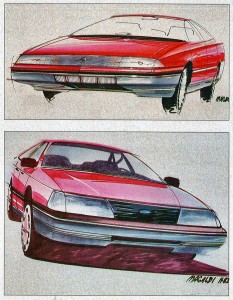 Even before pencil was put to paper, the Taurus design program was unusual. Rather than putting the design team in a normal production studio environment, the decision was made to place the handpicked designers, studio executives, engineers, an modelers in an autonomous studio that wouldn’t have to interface with the usual group of planners and engineers. As the Pre-Program Taurus studio got started in early 1981, a few parameters were set down for the team. These included the aforementioned transverse front wheel drive powerpack placement, seating for six semi-full-sized adults, and the basic platform had to have a useful production life of at least 15 years. The last item would have a pronounced effect on early Taurus vehicle proposals. These preliminary cars had the “weird-for-the-sake-of-weird” look of vehicles usually seen in science fiction films. But soon the “blade runner” influence was replaced by a more functional approach to the development of the car.
Even before pencil was put to paper, the Taurus design program was unusual. Rather than putting the design team in a normal production studio environment, the decision was made to place the handpicked designers, studio executives, engineers, an modelers in an autonomous studio that wouldn’t have to interface with the usual group of planners and engineers. As the Pre-Program Taurus studio got started in early 1981, a few parameters were set down for the team. These included the aforementioned transverse front wheel drive powerpack placement, seating for six semi-full-sized adults, and the basic platform had to have a useful production life of at least 15 years. The last item would have a pronounced effect on early Taurus vehicle proposals. These preliminary cars had the “weird-for-the-sake-of-weird” look of vehicles usually seen in science fiction films. But soon the “blade runner” influence was replaced by a more functional approach to the development of the car.
A lot of early work went toward giving Taurus a good wheel to body stance without sacrificing overall proportions. The first Taurus sketches show a short turnked hatchback. With low drag a primary concern along with a marked preference voiced by the marketing types for a 5-door in the Taurus line, it’s not surprising that the preliminary full-sized models were all hatchbacks. One of these mock-ups, however, did back form in an important way. The Pre-Program studio finished a full-sized clay model late in March 1981 that incorporated hatchback versatility with a more traditional profile. The influence of the notch back would prove quite noticeable. By the early part of 1982, concerns about the compromised rigidity of a hatchback expressed by some of the designers, along with the hatchback profile that had become a Taurus trademark, killed the fifth door feature for good.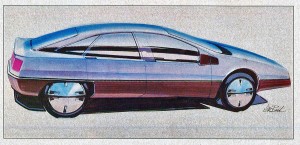
Once the shape was locked down for the Taurus sedans, the exterior crew moved to the station wagon. Traditionally just a boxed version of ta standard sedan, the customary approach wasn’t going to work what well on a car as slippery as Taurus. In its initial form the Taurus wagon was almost a demi-wagon or mega hatchback. The roof-line continued in an extension of the arc formed by the sedan roof rearward to the center of the rear wheel opening, then the roof continued back in an ever tightening radius. The result was, if nothing else, very controversial. Management approved the theme, but not the executions, so the designers went back to the boards and brought the roof drop off point rearward by about 17 inches. Originally, the vertical taillights of the wagon were going to continue in to the roof pillars so the lamps could do double duty as CHMSL as required by the Feds in 1986. But once the NHTSA decided that high light must be mounted in the center of the vehicle the “tall lamps” were abandoned. The final production CHMSL was fitted above the top edge of the wagon’s rear window and the light contains the spray nozzle for the rear washer.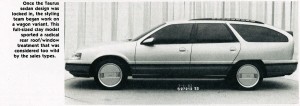
By the time the wagon was dialed in during August 1982, Design Staff had begun to turn over some of the Taurus program to the manufacturing development crew. Many of the Taurus design elements, like flush glass and bonded frameless quarter windows, hadn’t been done before; so there was a special impetus for designers and production engineers to work together. This meeting of minds brought about some important changes at FoMoCo’s engineering center. It was a case of key people interested in doing things right. Ray Everts, who was responsible for the design of Ford of Europe’s Sierra, was the executive designer of the Pre-Program Taurus group. He claimed the interface with the manufacturing and engineering groups brought about a new thinking that allowed the designers to “add a lot of expensive details to the Taurus by finding new and less expensive ways to produce them.”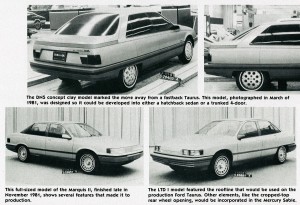
Some of the costly design elements Everts was talking about was the different outer skins on the Ford and Mercury version of the car. The final production Ford had a quarter inch character line running along the upper third of the body side. This groove extended from the wraparound turn indicator on the front fender, along the sides, and around the rear deck. The Mercury body side finishing was softer and didn’t exhibit this crease in its sheet-metal. Normally, different outer skins are very expensive, but the Taurus panels were stamped on the same preliminary dies. Only for the final draw were the dies different for Ford and Mercury versions. This was how the front quarter lamp clusters could be so radically different with the same support structure.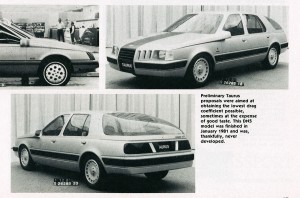
Another feature that gave both Ford and Mercury versions extra visual differentiation was the placement of the headlamps. One of the more expensive panels to tool up for a new car is the radiator support panel, with tooling for a new rad panel costing up to $10 million. A reason for the closely spaced headlamps on Ford’s Tempo/Topaz cars was these models had to share the same radiator support panel with the smaller Escort/Lynx cars. Even though the Taurus was a new from the ground up program, there was no way the corporation was going to let Ford and Mercury use different radiator support panels. With this foreknowledge, they designed the part to allow the mounting of headlights in one of two positions. This meant the lamp clusters on the Mercury were fitted more inboard than those of the Taurus.
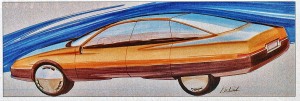

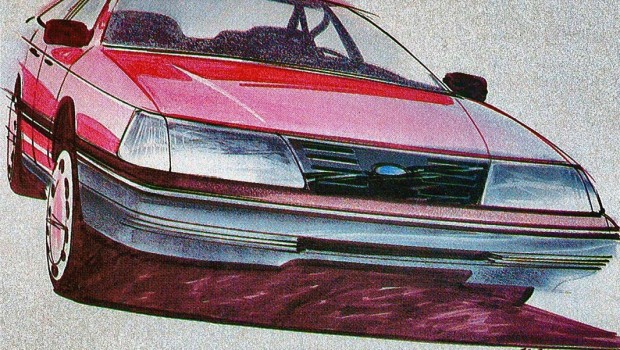
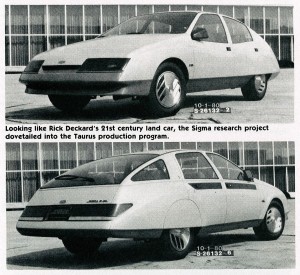
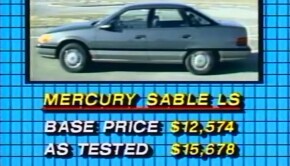
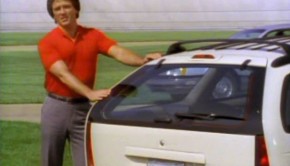
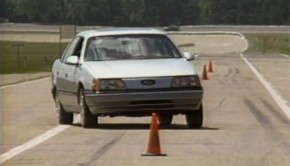
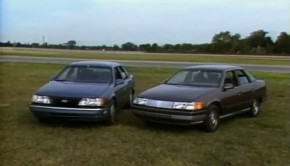





Ford become SAVED from bankruptcy!!! Hard work for 4 year from March 1981!
Pingback: » 1989 Ford Taurus SHO Test Drive
Pingback: » 1989 Taurus Wagon Spoilers Plus Aero GT Test Drive
Pingback: The Aerodynamic 1981 Ford Probe III Concept Changed American Cars Forever – Walled Lake Autos and Exotics
Pingback: The Aerodynamic 1981 Ford Probe III Concept Changed American Cars Forever - Auto News